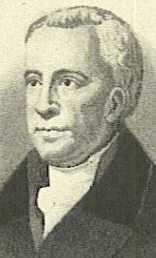Nationality Irish Name John Dunlap | Years of service –1794 Allegiance United States | |
 | ||
Occupation Printer, newspaper publisher, land owner Spouse(s) Elizabeth Hayes Ellison Battles and wars | ||
DEF CON 25 - Hardware Hacking Village - John Dunlap - A tangle of Plastic Spaghetti A Look Into the
John Dunlap (1747 – November 27, 1812) was the printer of the first copies of the United States Declaration of Independence and one of the most successful American printers of his era.
Contents
- DEF CON 25 Hardware Hacking Village John Dunlap A tangle of Plastic Spaghetti A Look Into the
- John dunlap part i john 9 1 4
- Biography
- References
John dunlap part i john 9 1 4
Biography
Dunlap was born in Strabane, County Tyrone, Ireland (now Northern Ireland). In 1757, when he was ten years old, he went to work as an apprentice to his uncle, William Dunlap, a printer and bookseller in Philadelphia. In 1766, William Dunlap left the business in the care of his nephew. John eventually bought the business, and at first made a living by printing sermons and probably broadsides and handbills too. In November 1771, Dunlap began the publication of the Pennsylvania Packet, or General Advertiser, a weekly newspaper. In 1773 he married Elizabeth Hayes Ellison.
During the American Revolutionary War, Dunlap became an officer in the First Troop Philadelphia City Cavalry, and saw action with George Washington at the battles of Trenton and Princeton. He continued in the First City Troop after the war, rising to the rank of major, and leading Pennsylvania's cavalry militia to help suppress the Whiskey Rebellion in 1794.
In 1776, Dunlap secured a lucrative printing contract for the Continental Congress. In July 1776, fighting between the American colonists and the British forces had been going on for nearly a year. On July 2, the Second Continental Congress voted to secede. Two days later, they approved the final wording of a public declaration regarding their decision, which we today call the Declaration of Independence. That evening John Hancock ordered Dunlap to print broadside copies of the declaration. Dunlap printed perhaps 200 broadsides, since known as the Dunlap broadsides, which were the first published versions of the Declaration.
Dunlap also printed items for Pennsylvania's revolutionary government. In 1777 he took over the printing of the Journals of the Continental Congress from Robert Aitken, but lost the contract in 1779 after printing in his newspaper a letter from Thomas Paine that leaked news of the secret French aid to the Americans.
In 1784, Dunlap's paper became a daily with a new title: the North American and United States Gazette. It was not the first daily in the United States—the Pennsylvania Evening Post beat him to the punch in 1783—but it became the first successful daily.
Continuing to serve the changing needs of the government, Dunlap and his partner David Claypoole printed the Constitution of the United States September 19, 1787 for use by the Constitutional Convention, and later published it for the first time in The Pennsylvania Packet.
Dunlap's major financial success came from real estate speculation. During the American Revolution, he bought property confiscated from Loyalists who refused to take Pennsylvania's new loyalty oath. After the war, he bought land in Kentucky. By 1795, when he was forty-eight, he was able to retire with a sizable estate. Retirement did not agree with him, however; according to his friend, Dr. Benjamin Rush, Dunlap became a drunkard in his final years. He died in Philadelphia.
